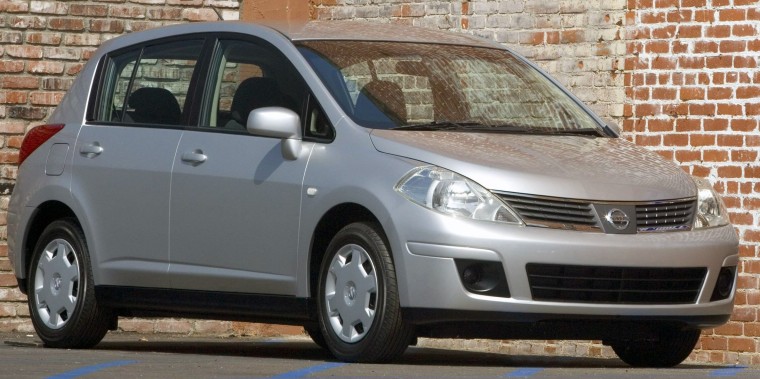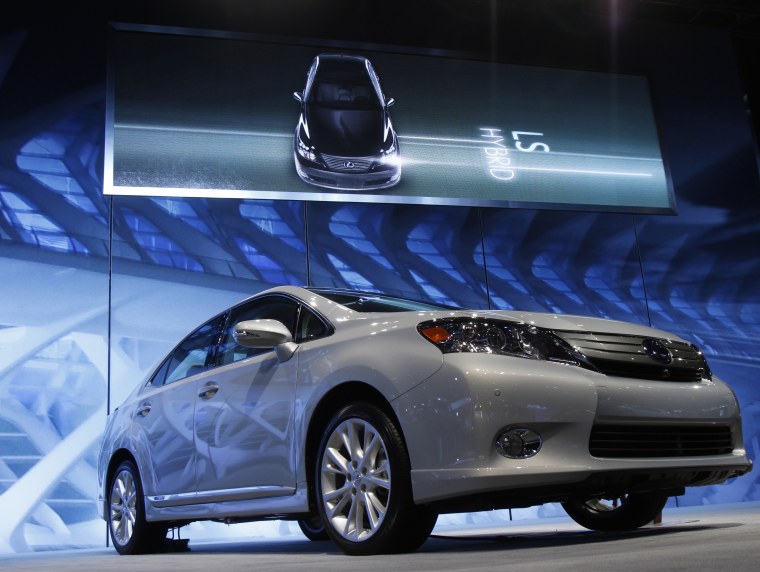Just as a great actor like Robert De Niro can waste his talent in a flop like “Rocky and Bullwinkle,” it turns out Lexus can fritter its auto-building flair on a drab luxury sedan like the HS250h.
Lexus, the luxury division of Toyota, applied its considerable attention to detail, lavishing the HS250h with exactly the kind of unseen features that have made its products the darling of upper-middle-class consumers.
After all, can anyone really tell the car employs Pulse Width Modulation to control the speed of the air conditioner’s fan for reduced energy use and noise? Probably not. But it is the kind of effort the company has always made to ensure its models were more special than the lesser Toyotas from which most of them are derived.
The problem here is that Lexus has established a high bar with its previous models, in contrast to its rivals at Infiniti and Acura. It was difficult to mistake the old Infiniti G20 for a Mercedes, and the shiny plastic that abounds even in current Acura models remains a signal that those cars aspire to luxury, but do not achieve it.
You'd expect Lexus to sustain its successful premium-only strategy after its competitors have show how cheapening models can lead to failure. After all, its customers only wanted a thrifty, high-mileage hybrid to show off their environmental credentials while driving something more prestigious than the “lowly” Toyotas their maids drive to work.
Lexus obliged. But in doing so, the company forgot to avoid the mundane. The HS250 is an unremarkable economy car with a stunning $45,000 price tag.
Lexus stylists eschewed the futuristic hatchback design of the Prius in favor of the four-doors-with-a-trunk sedan styling referred to as a “three-box” design by the industry (one box is the engine bay, the second one is the cabin and the third one is the trunk).
But with the proportions of the HS250h, the three-box layout produces what looks like just another econobox. If it were parked alongside the Nissan Versa four-door, the sometime claimant to the title of “cheapest car in America,” most consumers would be hard-pressed to discern one from the other at 10 paces.
Tug on the HS250h’s door handle and the door will reverberate with the sound of the festive toy drum that got packed away with the Christmas decorations, an embarrassment compared to low-prestige gems like the Volkswagen Golf and Subaru Forester. Those cars, despite their compact size and modest price tags, have doors with heft and solidity suitable for luxury brands.
Inside, the little Lexus features an upscale beige and black two-tone treatment that looks exclusive, and the perforated semi-analine leather seats and some of the trim is soft to the touch. But these details are marred by the use of cheap hard plastic for many other surfaces on the dashboard and door panels, including the parts around the door handles that the occupants touch when using the armrests or opening the doors.
Probably worst of all are the single-piece, black plastic seatbacks for the front bucket seats. Seen only from the rear seats, they resemble the plastic sleds that have covered snowy hillsides across the eastern U.S. in recent weeks, but in a more muted color. Maybe Lexus thought owners would never notice because they sit in the front seats.
The driving experience in the HS250h is as unremarkable as Lexus customers prefer, with an adequate 0-60 acceleration time of 8.5 seconds and probably the best execution yet of the company’s electric power steering. “Lexus’ experience with electric power steering continues to improve,” notes the car’s press release in a backhanded acknowledgement of previous shortcomings in this area.

Through this improvement and details like the dynamic dampers for the engine mounts, the optional Mark Levinson 330-watt sound system and the aforementioned magic fan speed controller, Lexus can make a solid case for its contention that the HS250h is a worthy and full-fledged member of the Lexus family.
But the car lacks the presence necessary to command the usual Lexus prestige. And although the EPA rates the HS250h at 35 mpg city and 34 mpg highway, in a week of suburban driving (in cold weather, which does reduce fuel efficiency) the tested unit returned 30 mpg. Not bad, but easily beaten by roomier, more comfortable models like the Ford Fusion Hybrid.
Because Ford hasn’t yet introduced a Lincoln MKS version of the Fusion Hybrid, the Ford isn’t a truly valid alternative to the Lexus, but Audi’s A3 TDI is. Audi’s interiors are always impressive and the A3 TDI (2010 Green Car of the Year) is a comfortable, efficient and fun-to-drive entry-luxury model.
With a lower starting price of $29,995, available all-wheel-drive, enthusiasts’ manual transmission and better highway fuel efficiency (30 mpg city, 42 mpg highway) than the Lexus hybrid, Audi demonstrates it is possible for a luxury brand to build a compact, fuel-efficient model without degrading the brand.
Maybe those Hollywood producers who manage to make bad De Niro films should consult with Audi next time.
